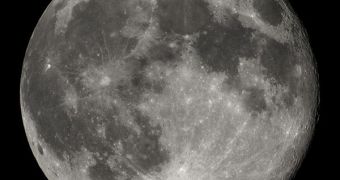The results of a new in-depth analysis conducted on Earth's natural satellite revealed that a moon such as our own may be extremely rare throughout the entire Universe. In our solar system, there is no other body to behaves quite like it.
Though largely ignored by many, the Moon played an absolutely critical role in the development of life here on Earth, and continues to do so to this day. Its most important contribution is providing planetary stability through the interactions it has with Earth.
But astronomers say that this type of interactions may be almost impossible to find elsewhere in the Universe. It is estimated that only about 10 percent of terrestrial extrasolar planets have moons large enough to stabilize them.
In turn, terrestrial exoplanets only make up a very small portion of all planets in the Universe. It is currently impossible to establish precise numbers, so the best experts can do is extrapolate based on available data, Space reports.
In the case of Earth, the Moon prevents the planet from changing its obliquity – the angle at which it spins in regards to the Sun – by more than a degree over the course of millennia. If the satellite were to be destroyed, the planet could swing as much as 85 degrees over the course of a few million years.
This would have catastrophic consequences on Earth's climate, considering that even the minute difference in obliquity that the planet is currently undergoing are enough to trigger relapsing ice ages,
If the Moon did not exist, the Sun would move from its position directly above the Equator to a position directly above the poles, and then revert back. The development of life would have been heavily impeded by this, as well as the evolution of more complex lifeforms.
University of Zurich experts led by astronomer Sebastian Elser recently conducted a scientific simulation of how the Moon developed in the early days of the solar system, after Earth collided with a Mars-sized planet.
They factored in the chance of the resulting bodies having a planet-to-moon ratio as high as the Earth and its satellite do today. Their results demonstrate that meeting the exact same specifications elsewhere would be an extremely rare and unlikely event.
Details of the new work will appear in a paper to be published in an upcoming issue of the esteemed scientific journal Icarus. It concludes by saying that, if such objects did form by chance, then they are spaced apart by extremely wide marings.

 14 DAY TRIAL //
14 DAY TRIAL //